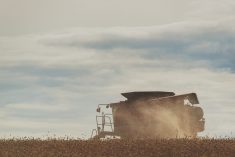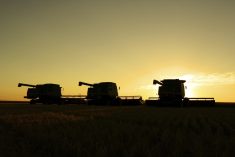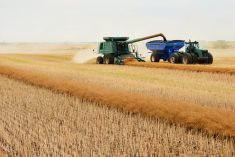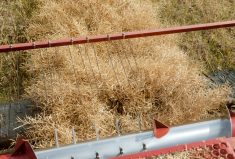Glacier FarmMedia — The harvest has begun in Alberta with pulses and fall cereals coming off in some regions, said the province’s weekly crop report released on Aug. 15.
Only two per cent of crops were harvested in Alberta, compared to the five-year average of 2.6 per cent. The south region leads with 5.6 per cent of all crops combined, followed by the Peace region at 1.9 per cent and the other regions were at 0.5 per cent.
Alberta’s fall rye was 53.8 per cent harvested, compared to 51.8 per cent of the winter wheat. Lentils were 20.9 per cent combined, while 8.3 per cent of dry peas have come off.
Read Also
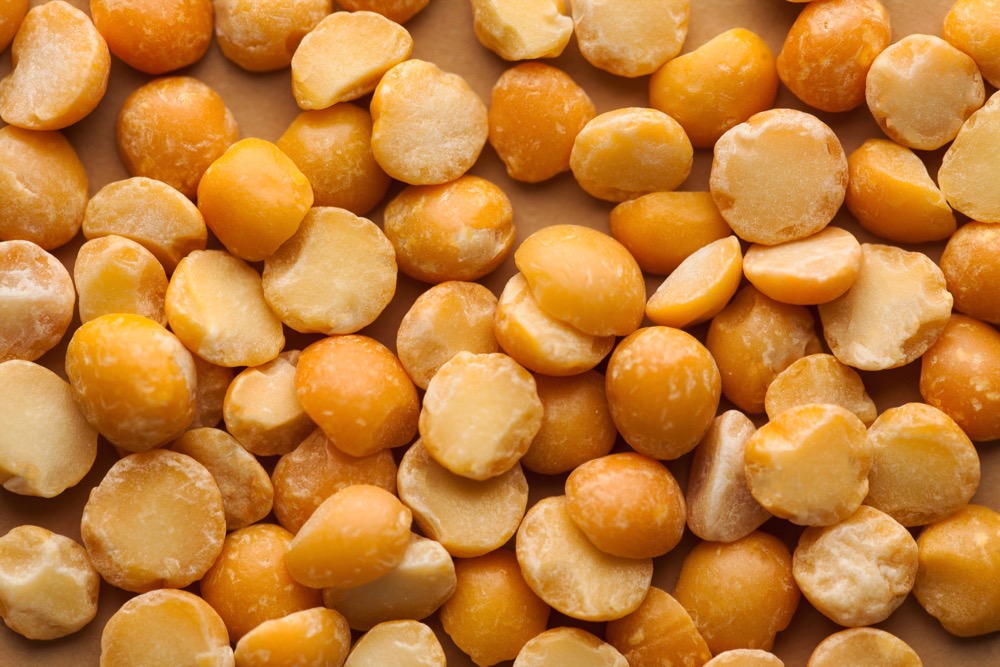
India slaps 30 per cent import duty on yellow peas
India has imposed a 30 per cent duty on yellow pea imports with a bill of lading date on or after Nov. 1, 2025.
Major broadleaf crops were at 94 per cent podding, four points above the five-year average. Spring cereals were in dough development stage while fall seeded crops were starting to ripen due to warm temperatures and timely rainfall. Pest pressure was minimal, with gophers and grasshoppers found in two per cent and four per cent of fields, respectively.
Alberta’s dryland yield estimates for major crops had a five-year yield index of 114.6, meaning projections were 14.6 per cent above the five-year average. The central region had the best five-year index at 136.7, while the worst was the Peace region at 92.2.
The province’s oat crop was projected to yield 69.5 bushels per acre on average, followed by barley at 66 bu./ac. Spring wheat was at 49.4 bu./ac., while dry peas were at 42.7 bu./ac. and canola was at 38.9 bu./ac.
Surface soil moisture in the province was variable during the week, but rated at 60.5 per cent good to excellent. Regionally, the central region was rated at 88.4 per cent (up two points from last week), as well as 58.3 per cent (up three points) in the south. The northeast was at 47.7 per cent (down two points), the northwest was at 43.1 per cent (up four points) and the Peace region at 32.2 per cent (down three points).
Sub-surface soil moisture was down one point at 52 per cent good to excellent. The central region fared the best at 81 per cent (down five points from last week), while the south was at 45 per cent (down two points). The northeast region gained 10 points from the previous week at 43 per cent, while the Peace region lost seven points at 33 per cent and the northwest gained three points at 32 per cent.
Pasture conditions were rated at 54.7 per cent good to excellent across the province. The best rated was in the central region at 86.9 per cent, 40 points ahead of the five-year average. The south region was at 48.3 per cent, the northwest was at 33.9 per cent, the Peace region was at 26.5 per cent and the northeast was at 25.3 per cent, 23 points below the five-year average.
The first cut of dryland hay was 95 per cent complete as of Aug. 12 with an average yield of 1.2 tonnes per acre, slightly below the five- and 10-year averages of 1.4. The central region averaged 1.7 tonnes/ac. while the south only reported an average of one tonne/ac. In total, 44 per cent of areas expected a second cut, but only seven per cent was complete. The second cut averaged 1.5 tonnes/ac.
For irrigated hay, the first cut averaged 2.5 tonnes/ac., while the second cut averaged 2.1 tonnes/ac., above the five-year averages of 2.3 and 1.7, respectively.






